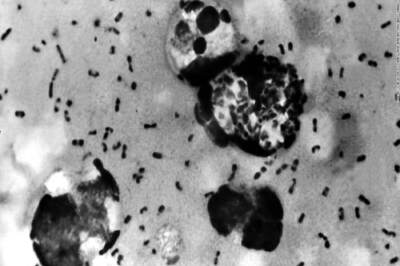
views
Getting Rid of Mold in Car
Open all the doors to air out your car. Mold thrives in a damp environment. Opening all the doors helps to dry out your car. Park the car in a sunny area to allow heat of the sun to help with the drying process.
Vacuum the entire car, focusing on the mold. Once your car has dried out, use a wet/dry vacuum cleaner with a HEPA filter to go over the entire interior of the car. Make sure to wear a mask, gloves, and eye protection to prevent fungal lung, eye, and skin irritation. Choose an N95 respirator mask, long rubber gloves, and goggles without ventilation holes to keep mold and mold spores out of your eyes and lungs.
Use water mixed with a mild detergent and brush to clean the mold. Mix 2-3 drops of dishwashing liquid in 1 gallon (3.78 L) of water. Dip the soft-bristled brush in the soapy water and gently scrub the spots of mold. It’s not necessary to kill the mold. As long as you address any moisture problems in the car, the mold spores can’t grow. However, to ensure the mold is no longer active, mix no more than 1 cup (236.58 mL) of bleach with 1 gallon (3.78 L) of water and apply the mixture directly to the mold to kill it. NEVER combine bleach and ammonia. They produce a toxic vapor when they are mixed. Bleach also reacts with hydrogen peroxide and other cleaning products, so only mix it with water to be safe.
Vacuum the interior of your car again. Go over your car again with a wet/dry vac to pick up as much mold as possible. The wet/dry vac also helps remove excess water in your car. Optional: Follow up with a steam cleaner to remove mold in hard-to-reach areas.
Allow your car to dry out completely before closing the doors. If you don’t allow your car to dry completely before closing it up again, the mold will likely return. So, make sure every surface in your car’s interior is completely dry. If possible, use fans to help any moisture dry. Optional: Use baking soda to deodorize your car’s interior and eliminate musty smells.
Removing Mold from Car ACs
Kill mold in your car’s AC system when you smell a musty odor. Smelling a musty odor when you turn on your car’s AC is a sign you may have mold in the system. Mold is still a problem even when you can’t see it, but getting rid of it is a little trickier. Kill mold in your car’s AC by turning the car off and spraying a disinfectant into the air vents. Then, turn on the car and switch the AC to fan mode – so it’s not cooling the air – with the fan on high. With the fan still running, set the system to recirculate the air. An image of a small car with a U-shaped arrow inside usually identifies this feature. Spray the disinfectant into your car’s recirculation vent. It’s often on the driver’s side floor, near the console, or in the trunk. Check your owner's manual if you can’t find it. If you continue to smell mold when you start your car, replace the cabin filter. With the doors open, run the car for 5 minutes running the fan on full power to dry everything out.
Cleaning Agents that Remove Mold
Chemical-based and natural cleaners are effective for killing mold. While it’s more important to make sure your car stays dry to prevent mold growth, there are a few options to choose from to make sure the mold is dead. When using a cleaner, test it on a hidden spot in your car in case it discolors the carpeting or upholstery. Here are a few cleaners that kill mold: Specialized mold removers Bleach & water Hydrogen peroxide Vinegar Non-iodized salt & water Baking soda Clove oil
Signs of Mold in Cars
Your car has a strong, musty odor or stale air. Most molds produce a musty odor, which is often the first sign of a problem. Since it grows anywhere with adequate moisture, it often infests your car’s air conditioner evaporator and ducts. This means you may smell mold long before you see it.
There are fuzzy or slimy patches in your car. This is the most obvious sign that you have mold in your car. Mold can come in an entire rainbow of colors, but the most common are black, gray, or green. However, the color doesn’t really tell you anything about the type of mold or any potential health risks. Most of the time, when people are talking about black mold, they’re referring to Stachybotrys chartarum. While people believe this mold is more dangerous than others, there’s no evidence that it poses any serious health risks.
Preventing Mold in Cars
Keep your car clean and dry to prevent mold growth. Moisture allows mold to grow. Cleaning your car regularly and allowing it to completely dry is the best way to prevent this growth. It’s also important to clean up any spills immediately. Use a fungicide after you clean to ensure you’ve killed any mold that’s present in your car. Parking your car in the sun instead of in a damp garage also helps prevent mold growth. Use a moisture trap to dry out the air inside your car. Ventilate your car and turn up the heat to dry out the air vents.
Doors, sunroofs, and windows are sources of excess moisture in cars. Check the weather stripping on the doors, windows, and sunroof for leaks. Fix a leaky sunroof by first clearing the drain tubes. Then, check for cracked or damaged door and window seals.
Health Risks of Mold
Mold in cars causes health issues in people with allergies. Many people have allergic reactions to mold, causing sneezing, runny nose, red eyes, and rashes. Mold also causes asthma attacks in people who are allergic to it and suffer from asthma.
Mold exposure leads to more severe complications in some. People with asthma or cystic fibrosis may develop a fungal infection of the lungs called allergic bronchopulmonary aspergillosis. In rare cases, those exposed to mold develop hypersensitivity pneumonitis, which is lung inflammation triggered by mold spores and dust. It’s impossible to avoid mold exposure completely, but there are effective treatments to help those who are sensitive to molds.
Why Mold Grows in Cars
Mold thrives in damp conditions. If your car gets damp and doesn’t dry out all the way, mold spores from the air will begin to grow. While it prefers warm, humid conditions, it also grows in cold weather. Mold spores are everywhere, but they can’t grow without sufficient moisture. Here are a few conditions that might cause mold to grow in your car: You’ve been driving in wet weather or left your windows open. There’s excess condensation and bad ventilation in your car. Your sunroof, windshield, or windows is leaking. You spilled a beverage or left wet items in your car. Your car has been sitting in a damp place for a long time. You don’t clean your car regularly. The car was flooded during inclement weather events.




















Comments
0 comment